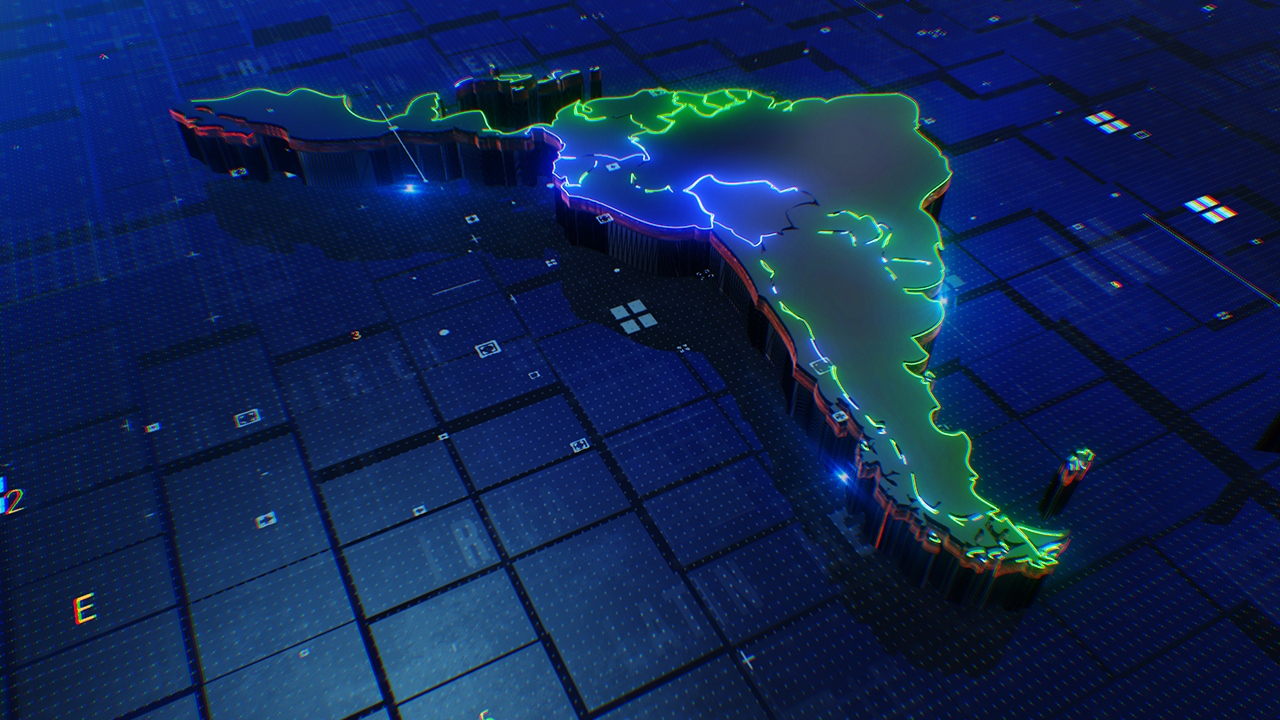Cautious optimism in Latin America
Optimism remains for the year ahead despite a sluggish Latin American market in 2023.

As in much of the world, 2023 saw a subdued performance from the Latin American label market. High inflation caused a dip in consumer demand, meaning excess stock that accumulated following the previous year’s material shortages took longer than expected to flow through the supply chain.
After a strong rebound from the pandemic and continued resilience in early 2023, economic growth in Latin America and the Caribbean slowed from 4.1 percent in 2022 to 2.3 percent in 2023 and is projected to remain at around this rate in 2024, according to the latest Regional Economic Outlook report from the IMF.
After reaching 7.8 percent in 2022, headline inflation in the region (excluding Argentina and Venezuela) declined to 5 percent in 2023 and is forecast to fall to 3.6 percent in 2024.
While globally, emerging markets and developing economies are projected to have 4.4 percent average growth, Latin America’s GDP is expected to expand annually at about 2.5 percent, similar to its pre-pandemic historical average.
“Nearshoring has been key, but there has also been a rebound in the value of the Mexican peso – it is the strongest it has been for many years”
Yet as inflation continues to fall, consumer confidence should return, so suppliers to the region remain cautiously optimistic for improved market conditions in 2024.
One bright spot is Mexico. The success of the first Labelexpo Mexico exhibition last year reflected the strong recent growth in that market, in part thanks to nearshoring: the country’s manufacturing sector is thriving as US companies look to shorten their supply chains.
‘Mark Andy saw significant growth in Mexico last year. It was our strongest international territory,’ says John Vigna, the press manufacturer’s Latin America sales manager. ‘Nearshoring has been key, but there has also been a rebound in the value of the Mexican peso – it is the strongest it has been for many years.’
Elsewhere in the region, Vigna reports early signs of recovery in Venezuela and Argentina – both beset by rampant inflation in recent years. ‘There is the beginning of an uptick in business in Venezuela. We have a large installation base there, mainly from before all the economic problems, and a strong local agent.
In Argentina, converters have responded positively to the new president Javier Milei, and enquiries have increased. There is deregulation going on and the country is trying to gain stability, but it is early days.’
Martin Fraire, CEO of Argentina-based distributor Leftech, says that 2023 was good for the country’s converters, but hard for any suppliers importing materials from abroad. ‘Inflation was rising so fast and it was hard to convert pesos into dollars to pay for imports. But it was a good year for converters – they were spending their money as quickly as possible, as were the brands. This year could be tough because the country is running a huge deficit and it will take a while for the situation to improve.’
Argentina’s rightward shift following the election of libertarian Milei is the exception among a move to the left in the region’s bigger markets – Brazil, Chile and Colombia have all elected left-wing presidents in recent years. Capital equipment expenditure typically slows in those circumstances, says Vigna, as companies become more cautious about investing. ‘The Chilean market, for example, is always quite stable, but even there, they have had some political issues which have had an impact.’
Vigna points to Central America as a region showing good growth. ‘Guatemala is our strongest market there, but we have also been installing machines in Costa Rica and El Salvador, among others. Guatemala has a strong local industry, particularly in the fruit label market as it is a big exporter of fruit.’
Overall, sales in the region have remained ‘pretty consistent’ in recent years, according to Vigna, with 2021 (when Mark Andy achieved record sales in Latin America) and Mexico’s performance in 2023 the main outliers.
This sentiment is echoed by Carolina Jaramillo, marketing director at Colombia-headquartered material manufacturer ARclad. ‘Latin America has remained reasonably stable, with a slight reduction in demand across the continent. Some markets have been affected more than others. Central America is one area that has continued to show strong growth.’
Areas of growth
As consumers in the region dealt with high inflation, they increasingly turned to retailers’ private-label brands and discounted goods. According to Kantar, the number of private label items purchased rose by 38 percent in Ecuador and ‘even’ 26 percent in Colombia, which it describes as ‘the traditional brands’ stronghold’.
Two label formats showing strong growth in Latin America are in-mold and shrink sleeve. The latter, according to Mordor Intelligence, is forecast to grow by 6.52 percent a year to 2026. Future Market Insights predicts IML to grow at a CAGR of 5.8 percent over the next decade, up from 2.6 percent from 2018-2022. It estimates the food segment represented 42 percent of the Latin American IML market in 2022, and forecasts it to grow by 1.9 times its current value from 2023 to 2033.
‘Latin America remained a consistent market for us in 2023,’ says Alex Cruz, sales manager for North and South America at Yupo, which manufactures synthetic materials for IML applications. ‘It is keeping pace and showing solid growth. The market has not fluctuated as much as some other parts of the world. The adoption of IML continues to grow. We’ve seen a trend of brands replacing paper with sustainable plastics and as one of the few companies that are APR-certified that is an advantage for us. Sustainability is a key aspect, but IML also allows brands to increase their margins.’
Stay up to date
Subscribe to the free Label News newsletter and receive the latest content every week. We'll never share your email address.


